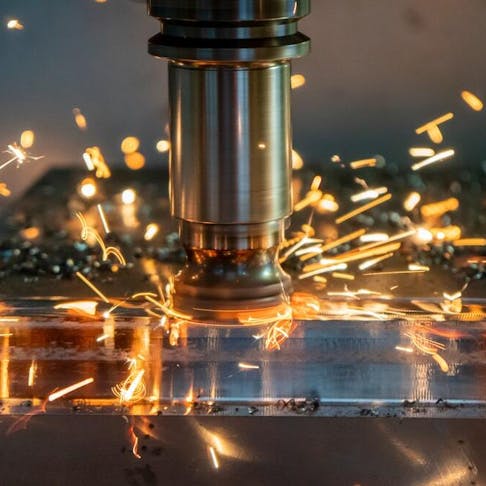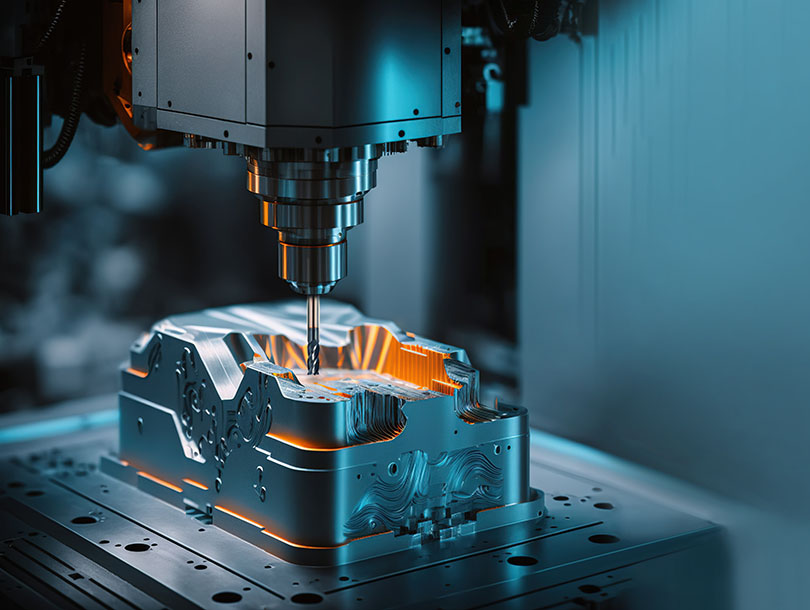Fasteners and Machining: Secret to Effective and Trustworthy Manufacturing
Fasteners and Machining: Secret to Effective and Trustworthy Manufacturing
Blog Article
Revealing the Intricacies of Fasteners and Machining Processes for Ideal Efficiency
In the realm of engineering and production, the choice of bolts and the complexities of machining processes play a crucial function in identifying the ultimate efficiency and toughness of a product. From the apparently simple job of selecting the right kind of fastener to the facility precision machining techniques utilized, every action in this procedure demands careful interest to information. As we start this expedition right into the world of bolts and machining, we will uncover the refined yet crucial variables that can significantly affect the efficiency and high quality of the last product, clarifying the frequently forgotten aspects that can make all the distinction in attaining optimal efficiency.

Value of Appropriate Fastener Selection
Picking the ideal bolts is important in guaranteeing the structural honesty and long life of any type of mechanical assembly. Fasteners play a basic function in holding components with each other firmly, with the best choice adding substantially to the overall efficiency and dependability of the assembly. When choosing bolts, elements such as product compatibility, ecological conditions, load-bearing ability, and simplicity of installment have to be very carefully considered to guarantee optimum performance.
Incorrect fastener option can cause a range of concerns, including helping to loosen, corrosion, and also architectural failure. Making use of fasteners that are not matched to the particular needs of the assembly can jeopardize its functionality and present safety dangers. Therefore, engineers and developers must thoroughly evaluate the application needs and select fasteners that meet or surpass the essential criteria and specs.
Furthermore, the right bolt option process includes examining the joint layout, anticipated loads, vibration degrees, and possible thermal expansion or contraction to guarantee that the selected bolts can hold up against the operating problems effectively. By prioritizing proper fastener choice, makers can boost the top quality, resilience, and performance of their mechanical assemblies.
Types and Qualities of Fasteners
An essential facet of mechanical settings up exists in comprehending the varied kinds and one-of-a-kind attributes of fasteners utilized in numerous commercial applications. Fasteners are essential parts that hold structures with each other, guaranteeing stability and functionality.
Screws are threaded bolts that are typically utilized to sign up with two or more elements together. Bolts resemble screws however are typically used with a nut to produce a safe joint. Nuts are internally threaded bolts that mate with screws to hold components with each other. Washing machines are thin plates that disperse the lots of a fastener, protecting against damages to the product being secured. Rivets are permanent fasteners that are hammered or pushed into place. Pins are made use of for alignment or to safeguard components momentarily.
Understanding the attributes of each type of fastener is important for choosing the best one for a particular application, guaranteeing optimum efficiency and dependability of the mechanical assembly. Fasteners and Machining.
Precision Machining Techniques for Performance
The complex style needs of different fasteners demand using precision machining methods for ideal efficiency in manufacturing procedures. One of the primary methods utilized in accuracy machining is Computer Numerical Control (CNC) machining, which allows high degrees of precision and repeatability in the manufacturing of bolts.
In addition to CNC machining, various other accuracy techniques such as grinding, milling, and turning are commonly utilized to accomplish the tight tolerances required for bolts. These techniques enable producers to create fasteners with smooth surfaces, precise dimensions, and high architectural stability. By other utilizing precision machining techniques, makers can improve the quality of fasteners, minimize material waste, and boost total manufacturing efficiency. In addition, using innovative machining processes assists make sure that bolts satisfy sector standards and consumer expectations for efficiency and dependability.

Factors Affecting Machining Process Efficiency
Different variables play a substantial function in figuring out the efficiency of machining processes in the production of fasteners. Maximizing these specifications based on the details requirements of the fastener being generated is key to attaining cost-effective and precise machining.
Equipment rigidity and security also play a vital duty in determining machining procedure performance. A secure maker with marginal resonances can improve precision and prevent go to this web-site device wear, resulting in much better general efficiency. The ability and experience of the machine operator can not be underestimated. An experienced operator can make real-time adjustments, troubleshoot concerns successfully, and make sure that the machining process runs efficiently, inevitably impacting the final quality of the bolt.

Quality Control Steps in Manufacturing
Aspects affecting machining procedure efficiency, such as cutting device choice and equipment security, directly effect the execution of quality assurance steps in production. Quality assurance steps are important in making sure that items satisfy the called for specifications and criteria. In the manufacturing procedure, numerous methods are utilized to preserve high quality criteria. Inspection and testing play a vital function in recognizing any type of discrepancies from the desired end result. Normal maintenance of machining equipment is also essential to copyright top quality control. Calibration of devices and makers is needed to make sure accurate and specific production processes. Additionally, applying standardized operating treatments and protocols can aid in preserving uniformity and high quality throughout the assembly line. Quality assurance measures not just focus on completion item but likewise on every stage of the production process to stop errors and flaws. By adhering to rigorous high navigate here quality control measures, makers can enhance client fulfillment, construct a credibility for integrity, and eventually attain optimum performance in their machining procedures.
Conclusion
Finally, choosing the appropriate fasteners and utilizing precision machining techniques are crucial for optimum performance in manufacturing processes. Understanding the types and qualities of fasteners, together with aspects affecting machining process efficiency, can cause enhanced effectiveness and quality control procedures. By focusing on these details, makers can achieve greater degrees of performance and integrity in their items.
In the realm of engineering and manufacturing, the selection of fasteners and the complexities of machining processes play a critical role in determining the supreme performance and longevity of a product (Fasteners and Machining). One of the primary techniques used in precision machining is Computer Numerical Control (CNC) machining, which makes it possible for high degrees of precision and repeatability in the manufacturing of bolts. The usage of sophisticated machining procedures assists guarantee that fasteners fulfill market standards and customer assumptions for performance and reliability
In verdict, choosing the right bolts and using precision machining methods are necessary for optimum efficiency in manufacturing procedures. Recognizing the types and features of bolts, along with factors affecting machining process efficiency, can lead to enhanced efficiency and high quality control steps.
Report this page